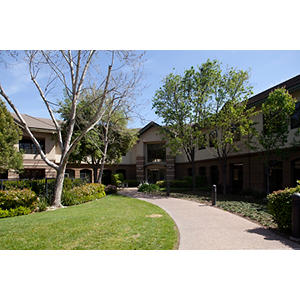Nichole Tyson, MD
Division Chief | Clinical Professor
Pediatric and Adolescent Gynecology
“It's incredibly rewarding to see girls and young women experience joy and resiliency despite difficult health circumstances.”
Mi acercamiento
Delivers comprehensive care from infancy to young adulthood, addressing reproductive health challenges intertwined with complex medical conditions and developmental disabilities. Specializes in managing pubertal and menstrual disorders, as well as performing minimally invasive surgeries to correct intricate congenital anomalies of the reproductive system. Works closely with a multidisciplinary team of experts, including specialists in adolescent medicine, pediatric surgery, pediatric urology, endocrinology, hematology/oncology, and gastroenterology, to provide holistic and tailored treatment.
Localización

1195 West Fremont Avenue
Sunnyvale, CA 94087
Mapas, direcciones y estacionamiento
Teléfono : (408) 426-5590
Fax : (650) 233-2872

Experiencia
Abnormalities of Puberty
Adolescent Sexual Health
Anomalies of the Hymen
Breast Problems and Abnormalities
Congenital Reproductive Tract Anomalies of the Uterus, Cervix, and Vagina
Contraception
Differences of Sexual Differentiation (DSD)
Endometriosis
Fertility Preservation
Genital Injuries
Gynecologic Care for Cancer Survivors
Gynecologic Endocrine Disorders
Gynecologic Surgery
Mayer-Rokitansky-Kuster-Hauser (MRKH) Syndrome
Menstrual Disorders
Menstrual Suppression
Ovarian Cyst
PCOS (Polycystic Ovarian Syndrome)
Pelvic Pain
Primary Ovarian Insufficiency and Hormone Therapy
Trabajo y educación
Tufts University School of Medicine, Boston, MA, 05/21/1995
UC Davis Dept of Obstetrics and Gynecology, Sacramento, CA, 06/30/1999
Obstetrics & Gynecology, American Board of Obstetrics and Gynecology, 2001
Focused Practice in Pediatric and Adolescent Gynecology, American Board of Obstetrics and Gynecology, 2018
Idiomas
English

Conéctese con nosotros:
Descarga nuestra App: